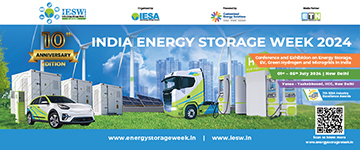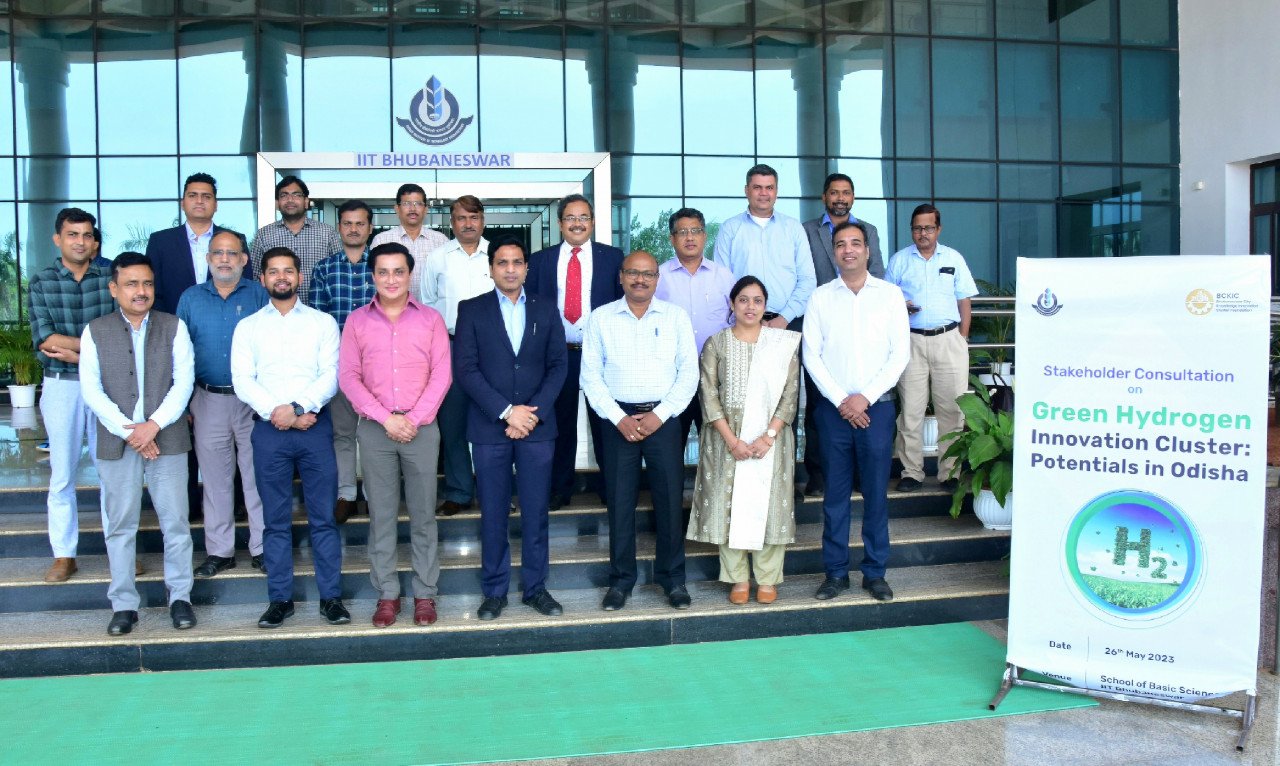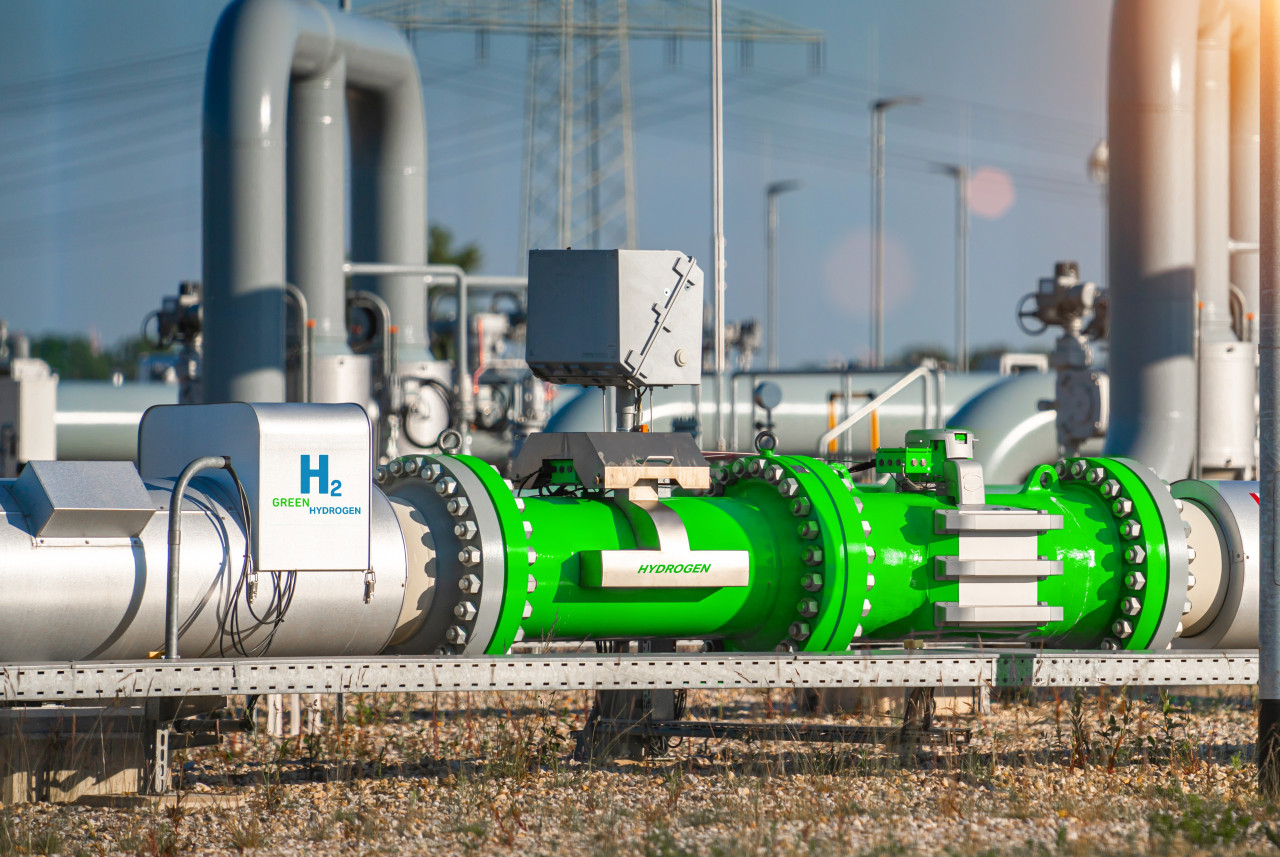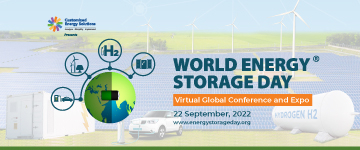Insights into green hydrogen developments in India
Dr. Ranjith Pai, Clean Hydrogen Mission Program Officer & Scientist, Dept. of Science & Technology, Ministry of Science and Technology, Govt. of India, shares insights into India's green hydrogen landscape, planned hydrogen valleys, and the promise and challenges to green hydrogen adoption in India.
Q: India is seeking to position itself as a global renewable hydrogen hub; could you elaborate on India's current domestic hydrogen landscape?
India is using a substantial amount of hydrogen for multiple industrial processes, including chemical, petrochemical, and energy sectors. All the hydrogen consumed, comes from fossil fuels. The current consumption of hydrogen (> 6 million tons per annum) is expected to increase further with the growth of the Indian economy. However, by 2050, nearly 80 percent of India's hydrogen is projected to be 'green' – produced by renewable electricity and electrolysis.
This is driven by dramatic cost declines in key production technologies such as electrolyzers and solar PV, partly driven by large-scale deployment in India and globally, by a virtuous circle between falling costs and strengthening policy to promote hydrogen. India's lack of domestic natural gas supply and the prohibitive cost of imports makes green hydrogen competitive sooner than in other parts of the world.
Today, many technological developments are coming together to enable the successful penetration of hydrogen in the energy system. They are: demand in end-use sectors, supply-side innovation in production technologies (electrolyzers and renewables), excess renewable generation handling, long-term electricity storage, deep decarbonization of energy systems, etc. These factors are beginning to drive a difficult circle for hydrogen deployment in the energy systems of several major economies. India can capture this emerging important circle, as hydrogen could be a crucial tool for a low-emissions, cost-effective, and less import-intensive energy sector for India.
In the next few decades, India has the potential to become one of the leading hydrogen hubs in the world, capable of satisfying not only its own requirement, but also supporting the requirements of other countries.
At the domestic level, the petrochemical and chemical factories will certainly lead the chart of hydrogen consumers. Along with them, the steel (in their mandate to decarbonize steel production) and energy sectors are also estimated to utilize a substantial share of the hydrogen.
Q: Under Mission Innovation and the Clean Hydrogen Mission, DST is in the process of setting up Hydrogen Valleys by 2030. Help us understand the concept of Hydrogen Valleys and the latest development in India.
One aspect of reducing the end-to-end costs of clean hydrogen is by successfully demonstrating through Hydrogen Valleys or clusters, for clean hydrogen in globally different geographical locations, enabling the scale-up, resulting in further cost reductions. India has got a good potential for establishing H2 valley due to its high renewable energy availability, different geographical locations, government and policy support, active research groups, and industrial participation, etc.
It is recognized that the cost of hydrogen will vary by application and region. Several external factors such as climate policy and its effects on the costs of alternatives such as electrification are likely to affect the cost competitiveness of clean hydrogen. We should have technology that is carbon neutral and the technology to be used has to be fully flexible to identify and target all the value chains of hydrogen. Current production, use, and trade of clean hydrogen are not sufficiently scaled to address this cost differential.
Cost reductions and efficiencies are also needed in handling, transporting, and storing hydrogen to enable it to become competitive for various end-use applications. The objective of hydrogen valleys is to optimize the hydrogen demand and supply by onsite generation and utilization, utilizing renewable resources effectively, and in producing hydrogen in geographically feasible locations. Utilize the large hydrogen storage and distribution infrastructure between production facilities and loading sites/ports, refilling stations if required.
To date, the majority of hydrogen research in India has been occurring in disconnected silos of academic and industrial segments. Thus, the unique innovations from academia seldom appear beyond small prototypes, while the practical problems faced by the industries remain unresolved. The hydrogen valley concept creates a unique template to bring both academia and industry on the same platform. Here, the industrial problems will define the course of the projects whose potential solutions will be provided by academic researchers. The successful outcomes of these projects will be further upgraded to commercial scales. Such upscaling via prototypes and pilot plants will be driven by industries following a well-established link between the upstream and downstream hydrogen value chain.
Q: What sectors do you believe could benefit the most from the use of green hydrogen in India?
Many carbon-intensive and hard-to-abate sectors are going to be benefitted from the adoption of green hydrogen in India. However, the impact could be far and wide beyond these sectors.
India is the third-largest emitter globally, emitting a net 2.9 gigatons of carbon dioxide equivalent (GtCO2e) every year as of 2019. The bulk of these emissions (about 70%) are driven by six sectors: power, steel, automotive, aviation, cement, and agriculture. Most of these sectors stand to gain by moving towards carbon abatement. Below are the key sectors that stand to gain from the adoption of green hydrogen technologies:
- Transportation: The transportation sector is a major contributor to India's carbon emissions. Green hydrogen can play a vital role in decarbonizing transportation by fueling hydrogen fuel cell vehicles or blending it with natural gas for cleaner combustion. Heavy-duty vehicles, public transport systems, and long-haul logistics could benefit from the adoption of green hydrogen as an alternative fuel, as electrification of these sectors of mobility is hard to achieve.
- Power Generation: Green hydrogen can be utilized in power generation as a clean fuel. Hydrogen can be used in fuel cells to produce electricity with zero greenhouse gas emissions. Incorporating hydrogen in power generation can help reduce carbon emissions from the electricity sector and provide a reliable and sustainable energy source.
- Industrial Processes: Industries, such as steel, chemicals, and refining, can benefit from green hydrogen in their production processes. Hydrogen can be used as a feedstock or fuel in industrial processes, replacing fossil fuels and reducing carbon emissions. Green hydrogen can enable cleaner and more sustainable industrial operations.
- Energy Storage: Green hydrogen can be utilized for energy storage, addressing the intermittent nature of renewable energy sources. Excess renewable energy can be converted into hydrogen through electrolysis and stored for later use. This stored hydrogen can be converted back into electricity or used as a fuel when renewable energy generation is low, providing grid stability and supporting the integration of renewable energy into the grid.
- Heating and Cooling: Green hydrogen can be used for heating and cooling applications in residential, commercial, and industrial sectors. It can replace fossil fuel-based heating systems, such as natural gas boilers, and contribute to decarbonizing the heating and cooling sector. It is important to note that the feasibility and potential of green hydrogen adoption may vary across sectors based on factors such as infrastructure requirements, cost competitiveness, and technological readiness. The sectors mentioned above have significant potential for leveraging green hydrogen to reduce carbon emissions and transition towards a sustainable energy future in India
Q: What are the main hindrances to the widespread adoption of green hydrogen in India? How is the Clean Hydrogen Mission addressing these challenges?
The proper identification of the resources that will be used for green hydrogen production is the major challenge for the development of green hydrogen tech in India. As India is different from the leading green hydrogen-producing countries in the context of feedstock availability, an India-specific solution is required, where biomass and seawater should be probed for cost-effective and sustainable green hydrogen production technology.
The appropriate link between renewable energy resources via the electrical grid is another area that warrants the attention of researchers from academic and industrial sectors. The Clean Hydrogen Mission supports projects that specifically aid innovations, which may resolve these practical issues. The collaboration between academia and industry through the hydrogen valley program will also nurture the environment for the development of practically viable solutions to fasten our shift towards a hydrogen-driven energy economy.
Another aspect is to achieve the widespread adoption of green hydrogen in India, a step-change in government policy and business actions will be required which includes greater cross-sectoral coordination within the government. This will help to realize the economy-wide benefits and interactions of hydrogen technologies. A paradigm shift is required from early-stage R&D programs to later-stage commercialization support to the plateau of productivity. To ensure that low-carbon hydrogen is favored over high-emission alternatives, an emissions penalty could be introduced at a certain stage — either in the form of more stringent regulations or a carbon tax. To support the demand for green products made using green hydrogen, green product standards should also be introduced.
And finally, to support these government-led initiatives, the private sector should target their activity towards competitive projects while partnering with international technology providers wherever necessary.

























